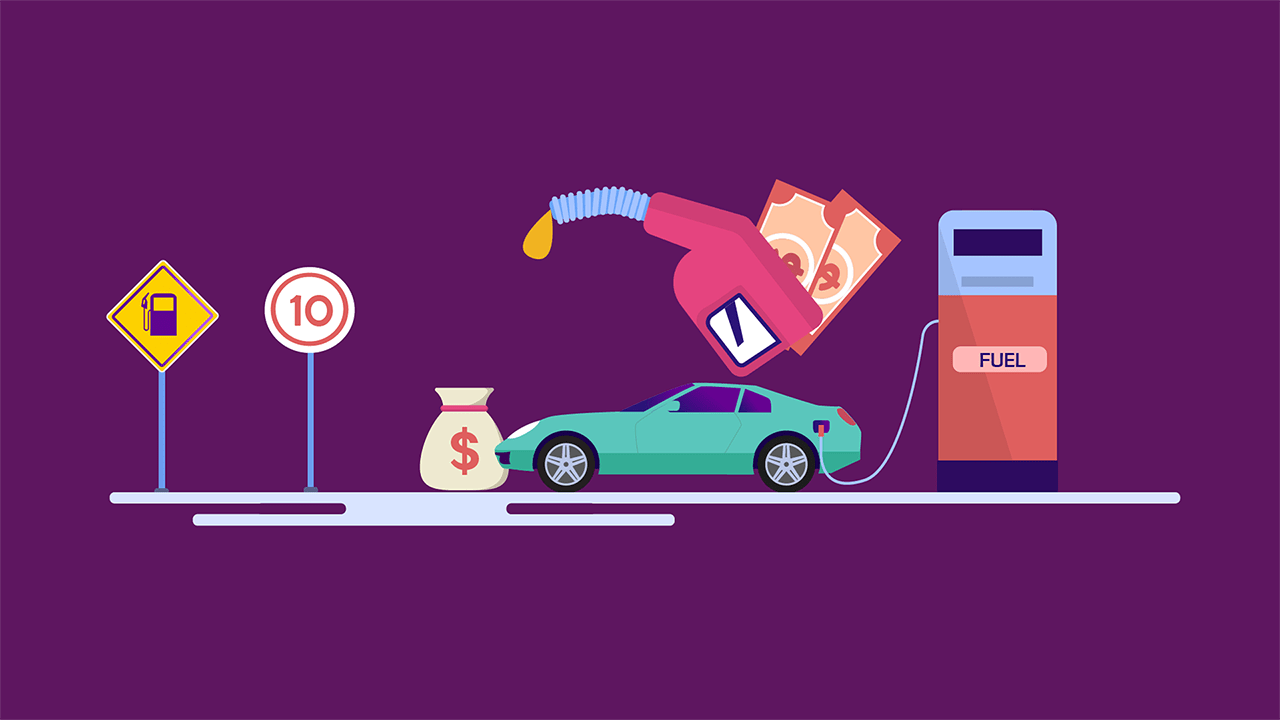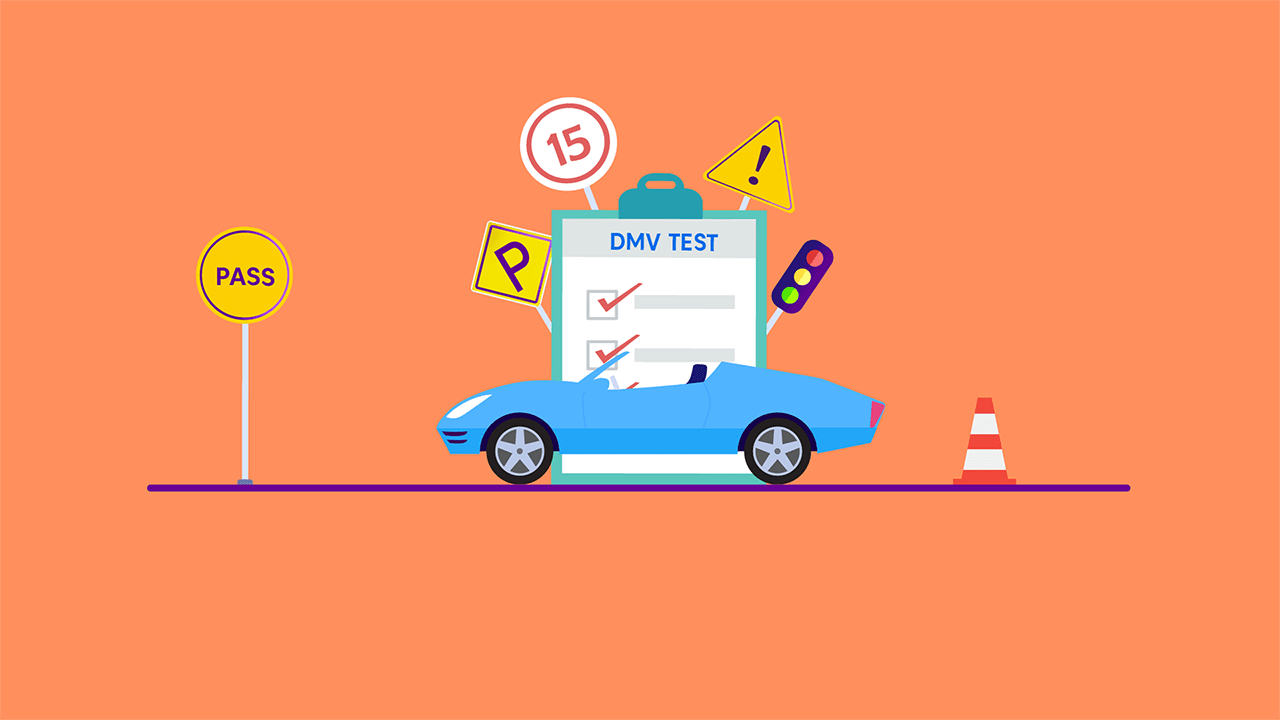A 2025 Guide to Pass your Permit Test | Tips & Tricks
By Umm e Hani on Apr 03, 2024Contents
- After the Test Capture Your Moment
- What If You Don't Pass the Written Permit Test?
- That's a Wrap!
- FAQ
Did you know that around 35% to possibly 43% of people don't pass their permit test the first time? If you fail, you can try again, but it might be a bit of a hassle, and the waiting time varies by state. Failing can be pretty frustrating and inconvenient.
The DMV permit test is the initial step to gain full driving rights in your state. The specific age you can take this test depends on where you live, but most people start preparing for it around age 15.
In this guide, we'll help you know how to pass your permit test on the first attempt. We'll break it down into three main sections:
- How to study for the permit test
- How to get ready for the test day
- What to keep in mind during the DMV exam
How To Study For The Permit Test?
Tip #1 – Read Your State's Driver's Handbook
Every learner should have a copy of their state's driver's handbook. It contains all the essential information about driving safely in your state. This includes things like knowing the rules of the road, understanding traffic signs, and how to drive in specific situations. You can pick up a free copy of the driver's handbook at your local DMV.
Tip #2 – Give DMV Practice Tests a Shot
To truly assess your preparedness, practice tests are key. It's a good idea to take several practice exams before setting your official permit test date. These practice tests are the best way to study for permit test. And, they provide a sneak peek into what the real test will be like and pinpoint areas where you might need more study.
Tip #3 – What to Look in a Practice Test
When selecting a practice test, it's crucial to find one tailored to your specific state. While some driving regulations are consistent across the United States, it's essential to focus on the rules and laws that apply in your own state. This ensures you're well-prepared for your DMV permit test and know what to anticipate.
Another important feature to look for in your free permit test resource is immediate feedback after each question. This allows you to identify any challenging areas and work on improving them. In certain states, even if you fail the DMV test, you won't receive feedback on which questions you answered incorrectly, making it difficult to pinpoint what to study.
Additionally, ensure the system is user-friendly, but the questions should be appropriately challenging. The practice test should cover road signs and road rules comprehensively, offering a realistic simulation of the actual DMV test. Ultimately, your goal is to gain a genuine understanding of the test, increasing your chances of passing on your first attempt.
How To Get Ready For The Test Day?
Tip #4 – Ensure You're Well-Rested
While many students seek strategies for passing the permit test, one of the most effective secrets to success is getting a proper night's sleep before the exam. Numerous studies have shown that a lack of sleep can significantly impair memory and other essential cognitive functions.
Without adequate rest, you may struggle to retain the information you've diligently studied for weeks. Prioritize an early bedtime and aim for at least 7.5 hours of sleep to ensure your body is adequately rested for the test. This step is crucial to enhance your chances of performing well.
Tip #5 – Have a Nutritious Breakfast
When you manage to get to bed earlier than usual, it's likely you'll wake up a bit earlier too. Having a nutritious breakfast in the morning can help activate your mental faculties well before your exam.
Studies indicate that skipping breakfast can reduce cognitive function and work efficiency, potentially resulting in a poor performance on your written permit test. Allocate some of your morning spare time to have a healthy breakfast before heading to the exam. This simple step can significantly improve your readiness and focus.
Tip #6 – Arrive at the DMV Early with Your Documents
To avoid any last-minute hassles on your test day, aim to reach the DMV at least 30 minutes before your scheduled appointment to ace driving test. This will give you ample time to calmly enter the DMV office and submit all the necessary paperwork. If by any chance you've forgotten a document, arriving early could provide you with an opportunity to retrieve it before your exam. Ultimately, arriving with time to spare at the DMV will help ease your nerves.
Tip #7 – Brush Up on Your Knowledge Before the Exam
Many students have found that a quick review of the test material can greatly benefit their performance on the exam. Carrying around a bulky driver’s handbook with hundreds of pages can be a bit inconvenient, so a brief refresher can be quite handy.
What To Keep In Mind During The DMV Exam?
Tip #8 – Maintain a Positive Mindset
Feeling nervous is common on the day of your exam. However, approaching your written test with thoughts of failure can adversely affect your performance. Remind yourself that you've put in significant preparation for this moment.
During the test, try to maintain a positive attitude, giving yourself the best chance at a perfect score.
Tip #9 – Thoroughly Read the Questions
Many students rush through the written exam, aiming for speed. However, this can lead to misinterpreting and answering questions incorrectly. Even if you know all the answers, take your time to read each question carefully, possibly two or three times, to fully grasp what it's asking.
With a clear understanding, you can provide a well-informed answer based on your knowledge. Keep in mind that the DMV doesn't offer extra points for finishing the test faster than others.
Tip #10 – Double-Check Your Answers Before Submitting
Once you've finished, take a moment to review your answers before submitting the exam. If time permits, go through each question again to confirm your choices. Make sure you're satisfied with your selections before handing in your test. This might seem like common sense, but it's an essential tip to prevent unnecessary mistakes.
Many states offer online exams with immediate score processing. Utilizing this tip can increase your chances of passing the test and avoid the need for a physical retake at the DMV.
After the Test Capture Your Moment
If you receive the news that you've passed your permit test, make sure to stick around for a little longer. A staff member at your local DMV will ask you to pose for a picture for your new learner's permit card.
You'll receive a temporary copy on the spot, and your physical card will be sent to you within 5-10 business days.
What If You Don't Pass the Written Permit Test?
In most states, you can retake the written test multiple times before you need to restart the process, so don't stress if your score wasn't up to par.
Don't Be Too Hard on Yourself
It's easy to dwell on minor mistakes that may have kept you from passing or achieving a perfect score, but that's not a healthy approach. Right after your test, take the rest of the day off from studying or reviewing driving-related material.
Trying to cram too much information into your brain all at once will only lead to frustration and hinder your ability to retain the information.
Prepare for Behind-the-Wheel Training
The next significant challenge after the written permit exam is the road test, and many students find it challenging. While driving isn't a difficult concept to learn, becoming comfortable behind the wheel takes time. Continue studying the driver's manual to ensure you know the rules of the road thoroughly – this will be invaluable in stressful situations later on.
In addition to practice and studying, take every opportunity to drive with a licensed adult. The more you drive, the better you'll become. When your road test arrives, operating a vehicle will feel like second nature!
Schedule Your Test Early
Since a DMV staff member must oversee all student road exams, there are a limited number of available appointments each day. These slots can fill up weeks in advance. Be proactive in scheduling your test to avoid delays in obtaining full driving privileges in your state.
Find a Suitable Vehicle
When taking the behind-the-wheel exam, you'll need to bring your vehicle to the DMV. Upon arrival, your test administrator will inspect your car to ensure it is in proper working condition and meets your state's minimum insurance requirements.
When selecting a suitable vehicle, ensure the following components are present and functional:
- Adequate brake pressure
- Two rearview mirrors
- Secure glove compartment area
- Working seat belts
- Audible horn
- Operational signal lights and brake lights
- Valid insurance and registration
That's a Wrap!
Whether you pass or not, take the time to revisit your study guide and driver's handbook to identify any topics you might have overlooked. All the knowledge you've acquired while preparing for your learner's permit test will be invaluable as you embark on your driver training journey.
FAQ
If You Fail Your Permit Test When Can You Retake It
If you fail your permit test, the waiting period to retake it varies by state, so check with your local DMV for specifics.
How Many Errors Are Allowed On The Permit Test
The number of errors allowed on the permit test differs by state, but aiming for a high level of accuracy is essential to pass.
What Do I Need To Know For My Permit Test
For your permit test, study road rules, signs, right-of-way, speed limits, and safe driving practices from your state's driver's manual.


